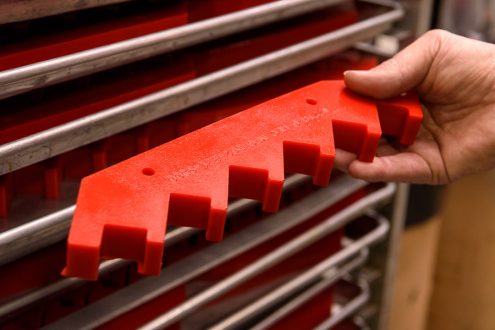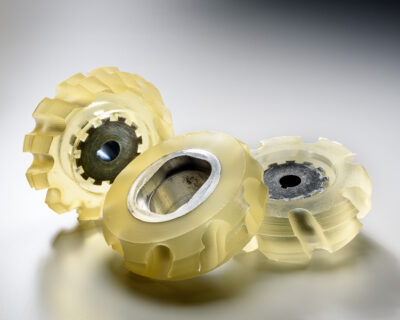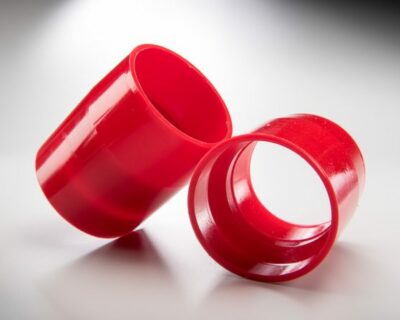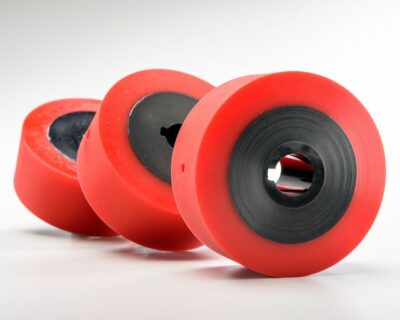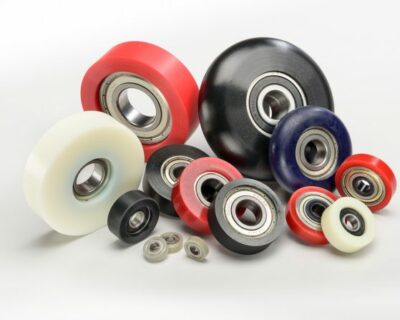Injection Molded, Thermoformed and Cast Urethane
Manufacturers can create dunnage using injection-molded plastic, thermoforming, or urethane molding. Which material to use (plastic or urethane) is based on a number of factors:
- End use or application
- Challenge the manufacturer is trying to solve
- Time frame
- Budget
Due to the wide variety of plastics and and urethane formulations available, it’s difficult to draw a direct comparison between plastic and urethane – as both have their advantages and disadvantages depending on the application.
Likewise, each dunnage manufacturing process has its own advantages and disadvantages.
Injection molding
Injection-molded dunnage, which can be made of either plastic or urethane, is ideal for very high volumes where precise tolerances are crucial.
The drawback to injection molding, however, is its cost: just getting the project off the ground can often be prohibitively expensive. Depending on part size and complexity, molds can start at $10K and go up from there.
Time is a factor as well. Creating the mold can be a slow and time-consuming process due to the exacting precision required of the tooling, which is made from hardened or pre-hardened steel or aluminum.
Thermoforming
Thermoformed dunnage is essentially limited to producing large plastic trays with pockets to hold items or individual pockets and fixtures that must be trimmed from a full sheet of material.
While much lower in cost than injection molding, thermoformed trays have almost no ability to absorb road and rail vibration, so items will bounce around in a tray pocket during transit.
Thermoformed dunnage trays are typically used to transport parts via cart within a production facility or are used on factory conveyor systems.
Urethane molding
The two main advantages of urethane molding are time and cost. Open cast, low pressure tooling is considerably less expensive than the hardened steel molds used for injection molding – and the lead time to create the tooling is considerably shorter.
In addition, prototyping, or proof of concept, can minimize potential production or quality issues, and any design or tooling modifications required are much quicker to incorporate and less costly.
Urethane’s properties make it ideal for dunnage
- Urethane is ideal for applications where superior abrasion resistance and exceptionally high impact resistance is needed. Think for a minute about a part, such as a heavy duty vehicle transmission, traveling by rail and then truck: it’s subjected to constant vibration, bumps, and potential impact should the transport vehicle come to a sudden stop.
- Urethane dunnage absorbs vibration and shields parts from impact. And, urethane’s properties make it resistant to cracking or becoming brittle – which means urethane has a longer life and is more durable than plastic.
- Urethane dunnage can be incorporated into jigs and fixtures to protect things on an assembly line, or in an assembly process.




